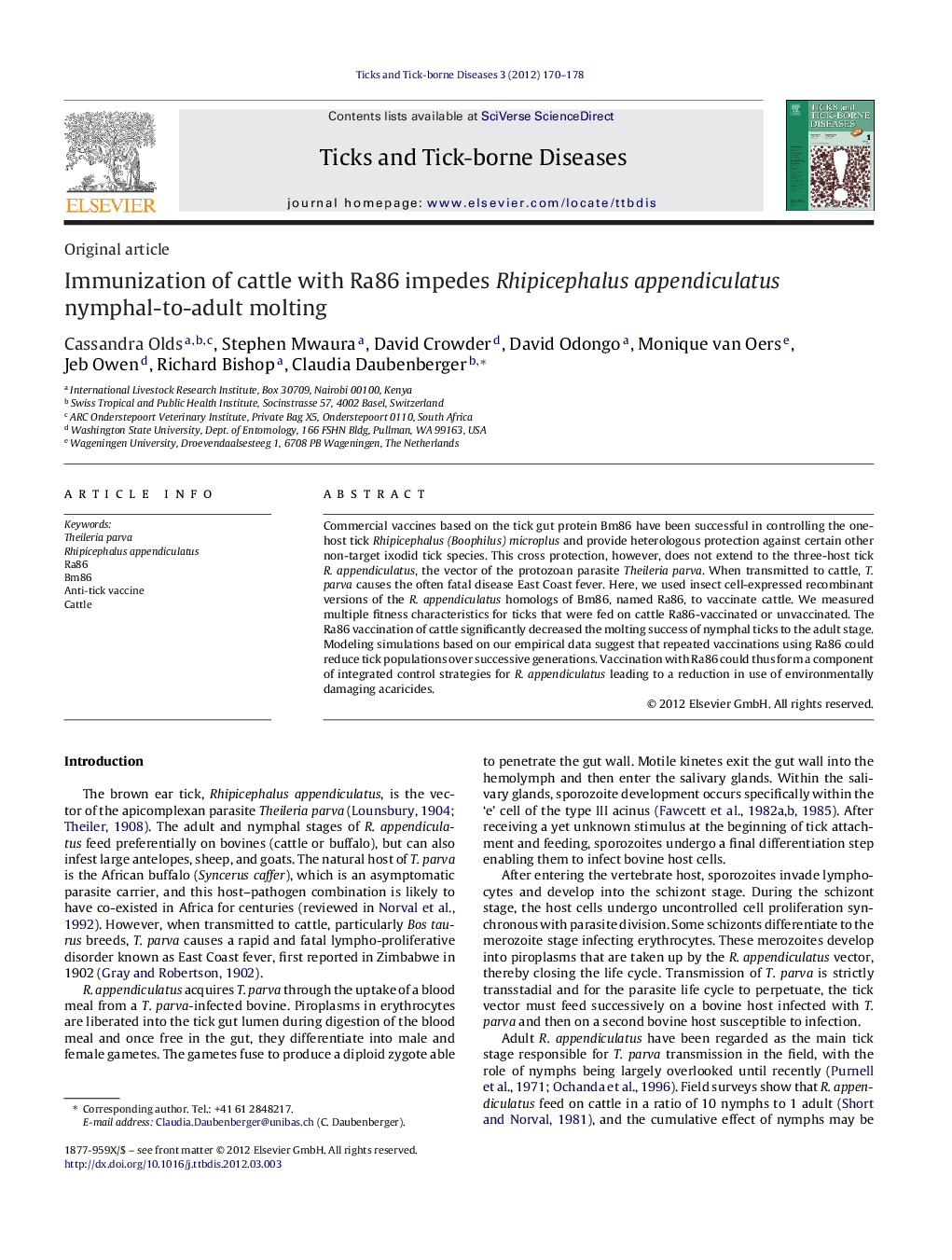| Article ID | Journal | Published Year | Pages | File Type |
|---|---|---|---|---|
| 5807289 | Ticks and Tick-borne Diseases | 2012 | 9 Pages |
Commercial vaccines based on the tick gut protein Bm86 have been successful in controlling the one-host tick Rhipicephalus (Boophilus) microplus and provide heterologous protection against certain other non-target ixodid tick species. This cross protection, however, does not extend to the three-host tick R. appendiculatus, the vector of the protozoan parasite Theileria parva. When transmitted to cattle, T. parva causes the often fatal disease East Coast fever. Here, we used insect cell-expressed recombinant versions of the R. appendiculatus homologs of Bm86, named Ra86, to vaccinate cattle. We measured multiple fitness characteristics for ticks that were fed on cattle Ra86-vaccinated or unvaccinated. The Ra86 vaccination of cattle significantly decreased the molting success of nymphal ticks to the adult stage. Modeling simulations based on our empirical data suggest that repeated vaccinations using Ra86 could reduce tick populations over successive generations. Vaccination with Ra86 could thus form a component of integrated control strategies for R. appendiculatus leading to a reduction in use of environmentally damaging acaricides.
